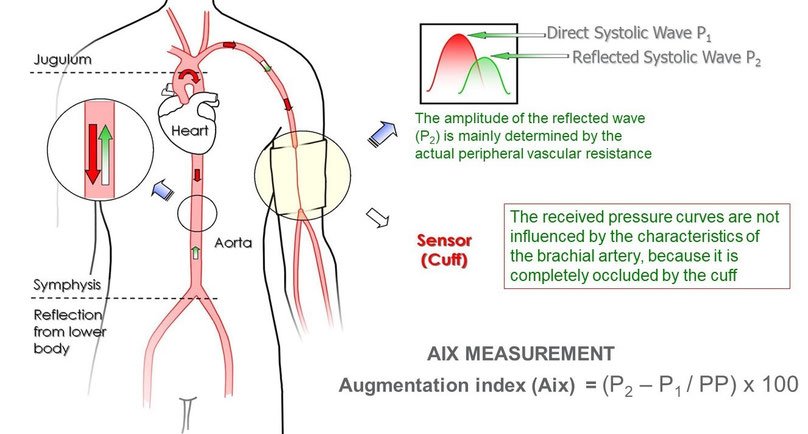Augmentation Index (AIx)
The Augmentation Index (AIx) plays a crucial role in evaluating endothelial function, primarily through the examination of peripheral wave reflection impacts. This index is instrumental in understanding arterial efficiency, as it sheds light on the effects of aortic stiffening and vascular resistance. Wave reflection, influencing the aortic systolic pressure peak and known as augmentation, signifies the additional pressure experienced by the left ventricle due to pulse wave reflection. As a noninvasive measure, AIx serves to quantify pulse wave reflection, providing valuable insights into vascular health. Serving as a non-invasive manifestation of heightened wave reflection, the AIx is a robust, independent risk indicator for coronary artery disease (CAD), premature atherosclerosis (endothelial dysfunction), and a reliable predictor of cardiovascular risk.
Endothelial dysfunction, accompanied by increased vascular resistance, can be detected by Arteriograph through an elevated Augmentation Index (AIx). Elevated AIx is associated with an increased risk of future cardiovascular events, and these index values have been found to strongly correlate with the risk of developing coronary artery disease in asymptomatic individuals with no prior history of such diseases.
In a nutshell, the Augmentation Index reflects on the "Total Peripheral Resistance" (TPR) and endothelial function in arterioles and small arteries.
How is Augmentation Index (AIx) calculated?
The left ventricle ejects a limited amount of blood upon contraction which generates a pressure wave. The Augmentation pressure calculation is based on the difference of the forward pressure wave generated by the left ventricular ejection and a reflected wave created by the impedance mismatch along the peripheral arteries.
AIx can be calculated by using the following formula
AIx = 100 × ((P2-P1)/ (Pulse Pressure)).



